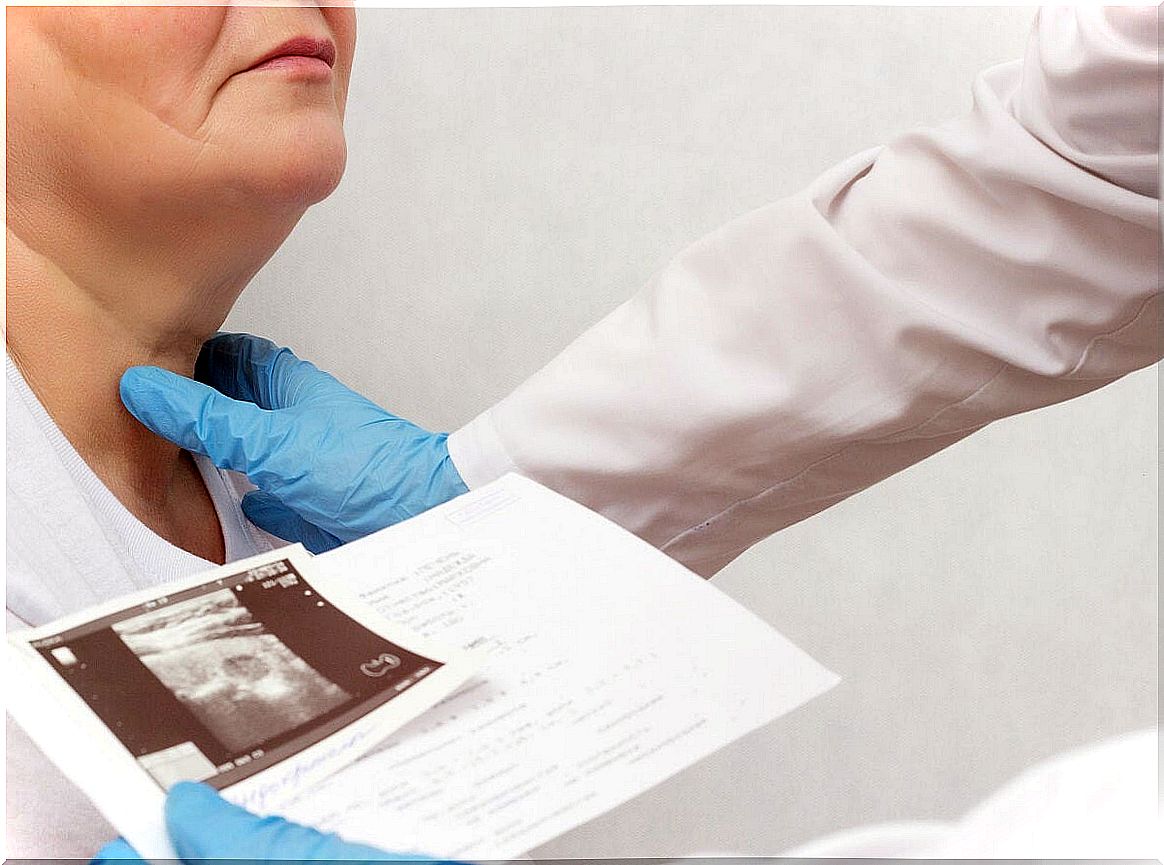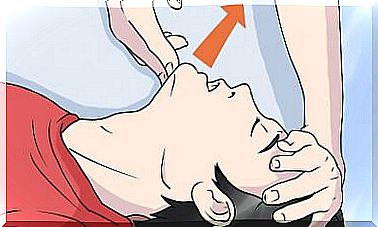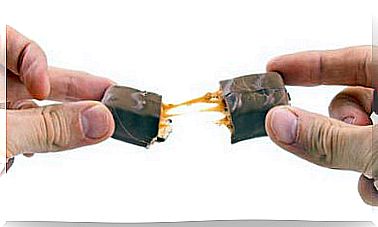Myxedema: Causes, Symptoms And Treatments
Myxedema is a cutaneous manifestation of certain hormonal disorders. It is also known as thyroid dermopathy , especially when it is accompanied by changes in skin color and texture.
These lesions can be present in advanced cases of hypothyroidism and in a rare condition called myxedema coma , which can be fatal. We have prepared the following article so that you know a little more about this disease.
Types of myxedema
Although myxedema presents more or less similarly throughout the body, it is possible to distinguish two well-defined types: facial and pretibial.
Facial
Depending on the evolution of the disease, it can become disfiguring. Various substances, including glycosaminoglycans, accumulate in the cheekbones and around the orbits.
In many cases, when it is an extrathyroid manifestation of Graves’ disease, it occurs concomitantly with ophthalmopathy (an eye condition). In these patients, both eyes appear to be larger, which is actually a consequence of the accumulation of these substances in the posterior part of the orbit.
Pretibial
It is quite common and is also associated with Graves’ disease ophthalmopathy. It is sometimes used as a synonym for localized myxedema. To make the diagnosis, a combination of clinical elements is necessary together with a biopsy that is evaluated by a pathologist.
As its name indicates, it is located in the lower limbs, covering its distal third. It tends to present bilaterally, be cold, hard, and leave no trace (fovea) on palpation of the lesions. The color of the skin can vary a little, acquiring a yellowish hue and accompanied by large pores.

Causes of myxedema
Although myxedema is considered a consequence of hypothyroidism, this is not true in all cases. Considering the pathophysiology of the disease, it appears to be more dependent on the hormone involved.
The secretion of thyroid hormones (T3 and T4) does not only include the thyroid gland. This regulation involves the proper functioning of the hypothalamus and pituitary gland, which secrete thyrotropin-releasing hormone (TRH) and thyroid-stimulating hormone (TSH), respectively.
Myxedema is the consequence of the accumulation of glycosaminoglycans under the skin, biomolecules that are very important for connective tissue. Its production is related to the hormonal stimulation of cells called fibroblasts . When the molecules accumulate, they attract water by a physical phenomenon that is osmosis, causing swelling or edema.
Hyperthyroidism
Here thyroid hormones are overproduced. This is the result of increased stimulation from the hypothalamus or pituitary, as well as due to inflammation of the gland, a condition called thyroiditis .
Depending on these last aspects, hyperthyroidism can be classified as primary, secondary or subclinical. One of the most common causes of myxedema is Graves’ disease, an autoimmune thyroiditis that causes an exaggerated release of thyroid hormones.
In this case, myxedema is usually pretibial and is associated with exophthalmos, a condition in which the eyeballs protrude from the orbits.
Hypothyroidism
In this case, opposite to the previous one, there is also a relationship with the hypothalamic-pituitary-thyroid axis. Doctors often classify hypothyroidism as primary, secondary, tertiary, and peripheral resistance to thyroid hormones.
Hashimoto’s thyroiditis is one of the diseases associated with the appearance of myxedema. It is also an autoimmune disorder that causes destruction and decreased function of the gland. In extreme cases, hypothyroidism can lead to a severe encephalopathy called myxedematous coma.
Symptoms of myxedema
Very variable degrees of severity can occur depending on each patient. In fact, there are localized forms that often motivate consultation in asymptomatic patients. When palpating the affected area, in most cases the skin is cold and hardened, something that allows us to differentiate this condition from other causes of edema.
Although it may appear as the sole manifestation of a thyroid disorder, this is not usual. Therefore, patients have any of the following symptoms:
- In hyperthyroidism there is anxiety, difficulty concentrating, weight loss, heat intolerance, insomnia, double vision, exophthalmos, and profuse sweating.
- Hypothyroidism has generalized weakness, weight gain not explained by other causes, a tendency to sedentary lifestyle, decreased heart rate, intolerance to cold, dry skin, hair loss (alopecia) and constipation or constipation.
- In Graves disease, exophthalmos, goiter (enlargement of the gland), and myxedema typically coincide .
Complications
Myxedema coma is a complication of hypothyroidism. It is named after the chance finding of myxedema in affected patients. In general, the accumulation of glycosaminoglycans is not considered as a cause of coma, but rather it is a consequence.
This thyroid encephalopathy was rare until the development of drugs capable of replacing thyroid function. It is currently considered a rare condition and is usually triggered by infections, particularly in elderly women with poor pharmacological control of their underlying condition.
It tends to cause loss of consciousness, bradycardia, hypothermia, and decreased pulmonary ventilation with reduced oxygen saturation. This last symptom is one of the most characteristic.
How is it diagnosed?
The diagnosis is clinical. There are no rapid complementary tests to confirm this condition, despite the fact that a biopsy of the lesions identifies the characteristic findings.
For this, the doctor will require a high degree of suspicion based on the medical history. The presence of ophthalmopathy and other characteristic symptoms of the thyroid gland affection allow a lot of orientation. To confirm this, blood levels of the main hormones involved (TRH, TSH, T3 and T4) could be requested.

Treatment of myxedema
In stable patients and in whom myxedema is only an incidental or additional finding, several consultations can be scheduled to evaluate the response. On the other hand, if myxedema is part of a thyroid encephalopathy, the approach is intended to maintain vital functions in an emergency.
In general, the skin lesions of pretibial or facial myxedema can resolve with the passage of time, since they are not usually the origin of vital emergencies.
The dermatologist is the specialist in charge of evaluating in the first instance. Of course, in most cases the lesions improve if the hormonal treatment is effective, which is usually established by an endocrinologist.
Topical steroids are the drugs of choice for pretibial lesions, despite requiring continuous evaluation to avoid complications, such as skin atrophy. In addition, the use of bandages could also be beneficial in some patients.
Myxedema in the context of the thyroid
Myxedema is part of the extrathyroid manifestations of many disorders, which can include both hypo and hyperthyroidism. Although under normal conditions it does not represent a vital emergency, the appearance of myxedematous coma can compromise the lives of patients.
The doctor in charge of the comprehensive evaluation is the endocrinologist, although the dermatologist usually deals with skin lesions and indicates the specific treatment. Sometimes family physicians or internists may be part of a multidisciplinary care team.









